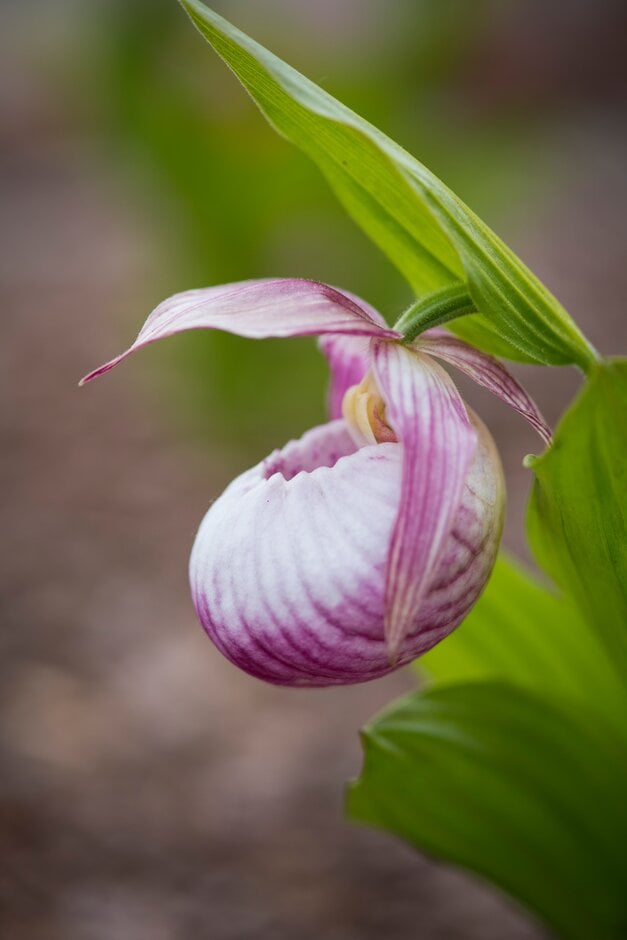Cypripedium Sabine gx
lady's slipper orchid Sabine gx
Sabine is a deciduous, hardy orchid to 50cm tall with oval, prominently veined leaves and large, egg-sized flowers borne on upright stems in spring; each flower comprises an ivory-white pouch flushed and striped with purple surrounded by purple and white striped tepals
Size
Ultimate height
0.1–0.5 metresTime to ultimate height
2–5 yearsUltimate spread
0.1–0.5 metresGrowing conditions
Moisture
Moist but well–drainedpH
Acid, Alkaline, NeutralColour & scent
| Stem | Flower | Foliage | Fruit | |
| Spring | Purple White | Green | ||
|---|---|---|---|---|
| Summer | Green | |||
| Autumn | Green | |||
| Winter |
Position
- Partial shade
Aspect
North–facing or West–facing or East–facing
Exposure
Sheltered Hardiness
H5Botanical details
- Family
- Orchidaceae
- Native to GB / Ireland
- No
- Foliage
- Deciduous
- Habit
- Columnar upright
- Potentially harmful
- Skin allergen. Wear gloves and other protective equipment when handling
- Genus
Cypripedium are terrestrial orchids with slender rhizomes and soft fan-shaped leaves, spirally arranged or in opposite pairs. Flowers are born in racemes of up to 12 flowers during summer have white, pink, red or purple tepals and a yellow, white, pink or purple pouch
- Name status
Accepted
How to grow
Cultivation
Grow in moist, fertile, leafy, humus-rich slightly alkaline soil in a sheltered site with dappled or partial shade - ideally with some morning sunshine. Provide an annual winter mulch of leaf mould. If late frosts damage flowers, grow in an unheated greenhouse
Propagation
Propagate by division in early spring and replant immediately. Some of the soil from the root ball, which contains beneficial fungi, should be planted with each division
Suggested planting locations and garden types
- City and courtyard gardens
- Cottage and informal garden
- Patio and container plants
- Flower borders and beds
- Underplanting of roses and shrubs
Pruning
No pruning required, allow foliage to die down naturally
Pests
May be susceptible to slugs
Diseases
May be susceptible to grey moulds
Love gardening
Sign up to receive regular gardening tips, inspiration, offers and more
View our Privacy Policy
Get involved
The Royal Horticultural Society is the UK’s leading gardening charity. We aim to enrich everyone’s life through plants, and make the UK a greener and more beautiful place.

